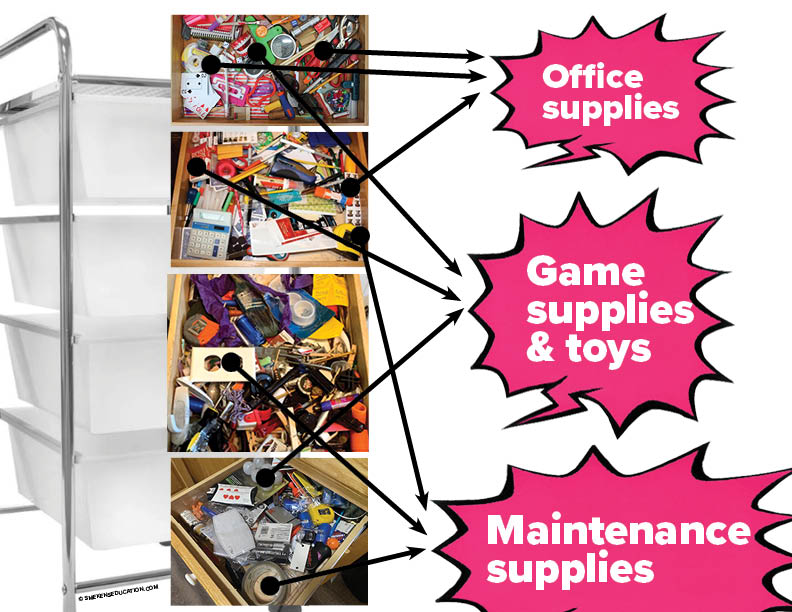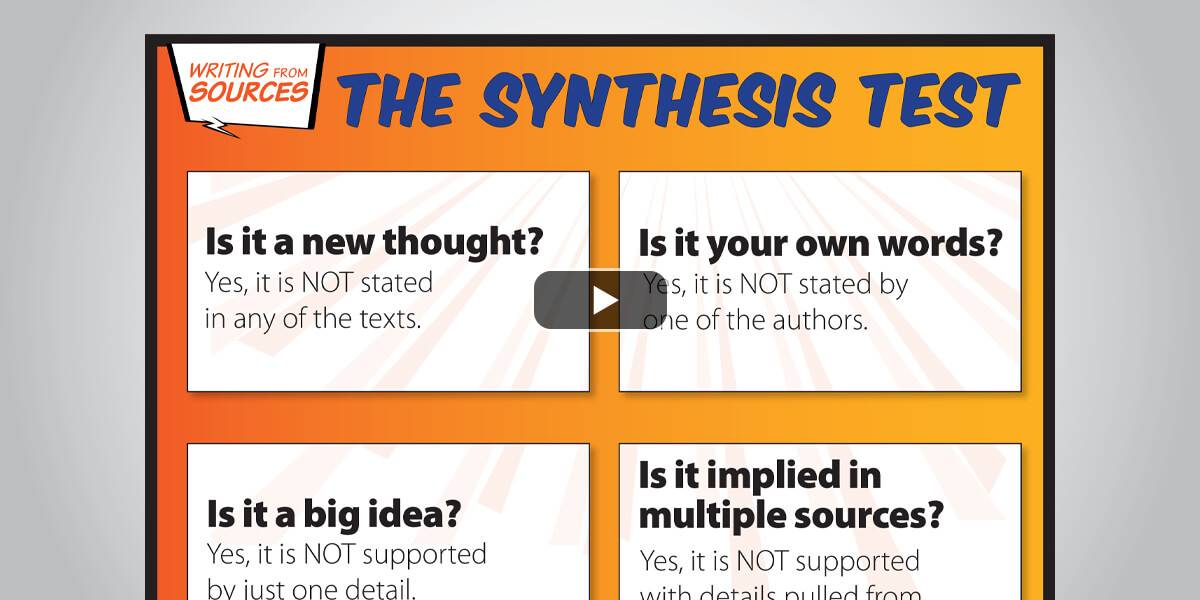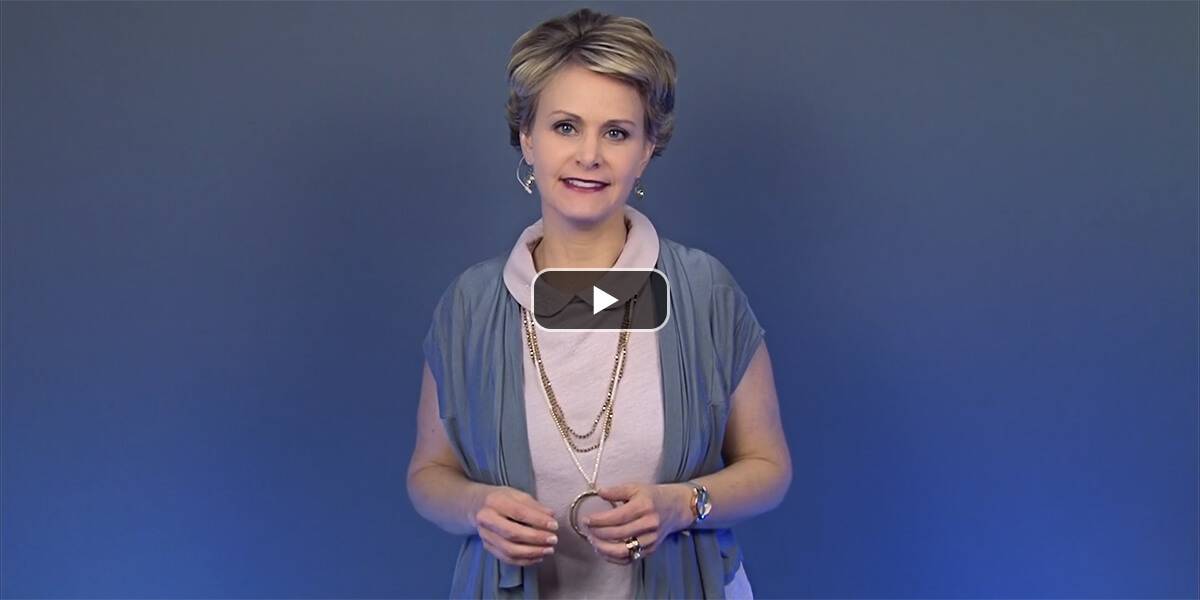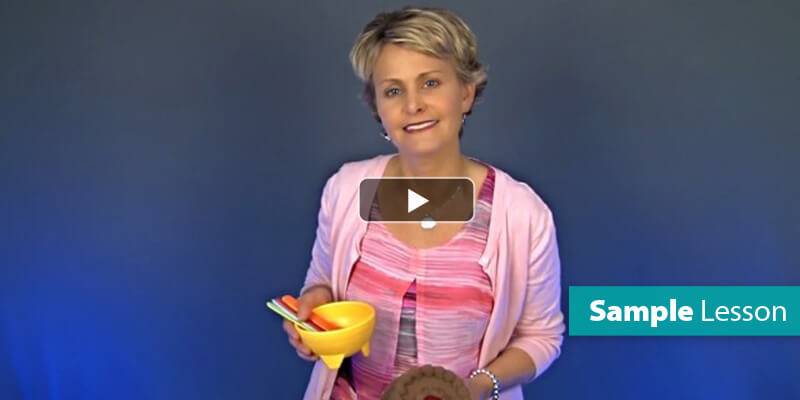Learning Center
reading
Practice 2-step synthesizing with visuals
april 5, 2022
A synthesis occurs when a reader combines two or more details from multiple texts to generate a new idea.
As simple as this may sound, achieving a synthesis is a complex task that requires two key steps.
STEP 1—Collect details.
It all starts with the reading and collecting of details from multiple texts.
- The reader takes notes on the facts learned from Source 1.
- Then he reads and jots down new and different facts acquired from Source 2.
- He continues to take notes on the new and different information learned from all the remaining sources.
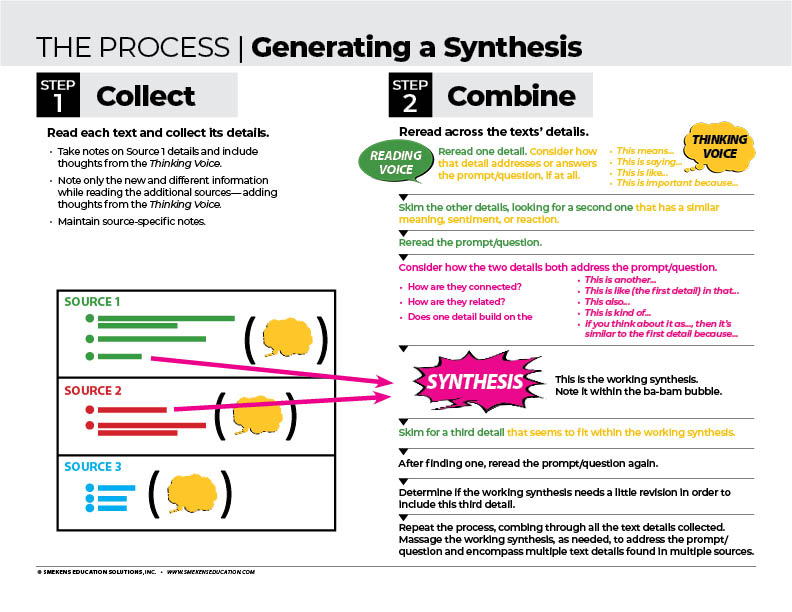 This first step reinforces that a synthesis cannot occur until after all texts are read. If the student is to integrate details from multiple sources, then he has to first read, collect, and comprehend each source individually.
This first step reinforces that a synthesis cannot occur until after all texts are read. If the student is to integrate details from multiple sources, then he has to first read, collect, and comprehend each source individually.
STEP 2—Combine details.
When it comes time to combine the details that have been collected, students have to think beyond each individual text detail to look for ways that they are connected or related.
Here’s how the process works:
- The student rereads a single detail from his notes.
- He considers how that detail addresses the prompt or answers the question, if at all. This means…, This is saying…, This is important because….
- He skims the other details, looking for a second one that has a similar meaning, sentiment, or reaction. This is another…, This is like (the first detail) in that…, This also…, This is kind of….
- After identifying commonalities, he creates a working synthesis– similar to a hypothesis.
- Then he continues to skim for additional details that will support his working synthesis.
It’s important to remember that although multiple details can come from the same source, the new idea isn’t a synthesis until it includes at least one detail from a different text.
Utilizing this 2-step process, a reader learns to generate a synthesis—a big new idea supported with specifics from different sources.
Initially, this complex thinking process can be practiced with visuals like multiple shelves on a shoe rack, several kitchen cupboards, or even various junk drawers.
Here’s how to use the junk drawer visual:
- Think of each junk drawer as a source.
- Note that each drawer has its own unique “details” or contents.
- Without moving or reorganizing the contents of the drawers, identify at least one item from the first “source” that fits a broader category (e.g., game supplies).
- “Read” the second drawer looking for a detail that fits that same category.
- Connect these “details” by drawing lines and arrows that point at a new synthesized label.
Repeat the process to generate other syntheses using the same junk-drawer photos (e.g., office supplies, maintenance supplies, etc.). Eventually, apply this same 2-step process to word details collected from print text.
The ultimate purpose behind synthesizing is to create critical thinkers. This requires students to move beyond simply summarizing individual texts to generating their own, new, bigger thoughts based on knowledge gleaned from the texts.


